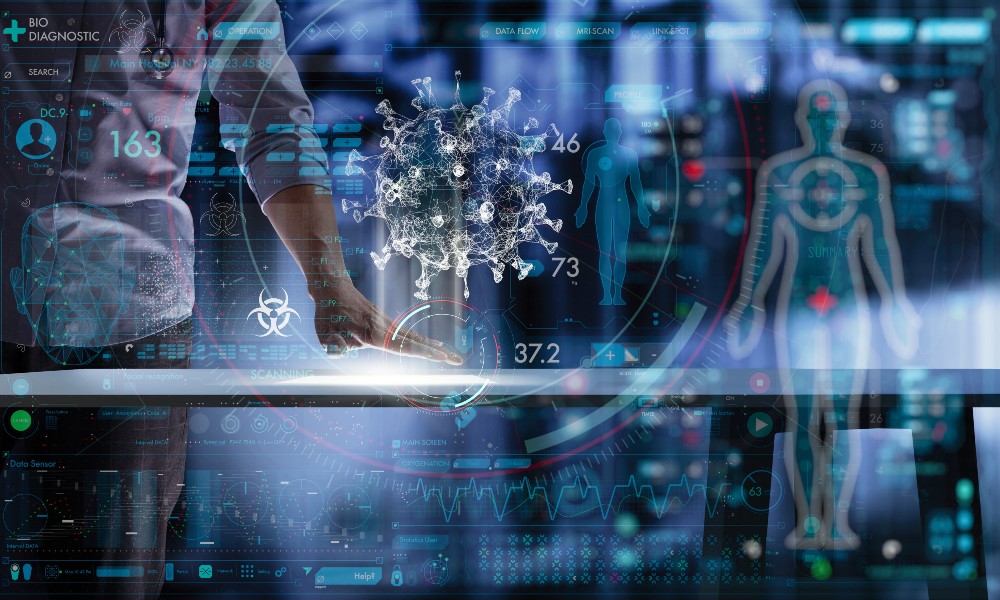
Just when we thought the spread of Covid-19 had been brought under control by vaccines, boosters, behavioral modification, improved distancing and sanitation measures in buildings, and information sharing, we found ourselves once again confounded by the latest, most transmissible strain – Omicron, which recently hit an astounding 1 million cases per day in the U.S. alone.
Hospitals and clinics around the world are once again strained to the limit and developing every possible approach to providing care while their own staffs have been shrinking, and emergency responders are likewise falling ill.
The relationship between doctors, nurses, specialists, police, fire, ambulance, and others has always been important to streamline, whether during a mass casualty event, natural disaster, or health emergency like the one we are grappling with today.
“Reliable, secure, predictable and high-quality communications channels, networks and applications have proven to be both life-saving and economically advantageous,” said Roy Timor Rousso, CRO, JpU, provider of enterprise 5G core network solutions and cloud-native services in North America, which make it possible for medical organizations and government agencies to “cut the wires” and take advantage of superfast private mobile networking.
“Consider telemedicine alone. With virtual visits, professionals can literally see patients using video collaboration, a much safer way to treat those who come down with highly infectious diseases, allowing them to get better at home without overcrowding hospitals, and risking the lives of medical staff,” Timor Rousso continued. “This is only one of many benefits, whether Private 5G is being used to connect a community, using CBRS for example, in a neutral host environment where many organizations can securely and reliably interact on a shared wireless network or are being used by a large medical center with large campuses and multiple locations.”
Unlike traditional WANs, 5G-based private networks require far less physical infrastructure (cabling and wires) but can deliver high density, much faster performance as the primary network or provide backup connectivity for continuity, especially in times of crisis.
“During a natural disaster,” Timor Rousso said, “hospitals, ambulance companies, assisted living and skilled nursing facilities consider the ability to communicate a mission-critical requirement, and especially given advances in how 5G infrastructure can be stood up - much more quickly and affordably than redundant terrestrial, fixed networks – we’re seeing a surge of interest in moving to enterprise 5G with many meaningful use cases in protecting people and saving lives.”
The pandemic accelerated investments in healthcare technology, which grew to over $9 billion in 2020, 19% higher than 2019. Gartner reported that the pandemic had fueled the rise of 5G network infrastructure worldwide by 39% in 2021.
“Connected devices are a huge part of this growth,” Timor Rousso said. “Digital transformation within the healthcare industry has been notoriously slow, until the last few years, when health systems have been pushed to their limits, and insurance companies and government agencies like Medicare have stepped in to pay for virtual care to reduce casualties and cost. As a result, the healthcare industry now is a leader in innovation, as a necessity became the mother of invention. Enterprise 5G networks are unlocking the potential of new applications and use cases.”
Timor Rousso pointed to the city of Milan, where Vodafone set up 5G connected ambulances allowing paramedics to keep in touch with emergency rooms and share information about incoming patients, or their ability to treat patients on the scene with live expert advice from medical centers. “Italy was hit especially hard,” Timor Rousso said, “and by supporting collaboration between first responders and care teams in centralized locations, many lives were saved.”
One of the greatest benefits in such scenarios is the “five nines,” or 99.999% reliability 5G delivers – guaranteed quality of service and solid, ubiquitous coverage.
“There are so many money-saving and life-saving applications 5G can support, unlike any other network protocol,” Timor Rousso said. “Remote patient monitoring, connected vehicles, Augmented Reality (AR) assisted robotic surgeries, and more all work better on 5G networks. With the availability of valuable bands of spectrum, notably CBRS in the U.S., we are seeing investment in enterprise 5G networks skyrocketing, including with support from the nationwide Infrastructure Bill, which is driving availability of 5G even in the most remote areas. Fast and extremely secure data transmission is crucial, and 5G technologies come with advanced encryption protocols, better privacy protection, a more manageable software-driven environment, and extremely sophisticated authentication and authorization.”
5G networks reduce latency to 1 ms or less and increase data transfer speeds from 100 Mbps to 20Gbps. They can also support more devices at scale.
4G LTE networks can only handle a few thousand connected devices, while 5G networks support a capacity of up to 1 million connected devices per square kilometer. This is game-changing as medical communities are now building entire ecosystems enabling devices to transmit large files in real-time.
“The number of use cases are very exciting,” Timor Rousso said, “beyond the obvious telemedicine and telehealth services. AR innovations are making virtual care more powerful, AI applications more accessible, digital medical imaging more shareable, and much more. In combination with the increasing number of very sensitive and sophisticated medical monitoring devices – heart rate, oxygen level, glucose level, and more – world-class care can be delivered to the home enriched with real-time data. Robotics mean surgical medical procedures can be done by experts from anywhere in the world and so much more. These are very meaningful developments, and given the affordability to equip medical centers with enterprise 5G in a very affordable way – and to share the cost among the healthcare ecosystem in communities – it is no wonder this fast, secure, wireless networking is becoming the new standard.”
The 5G healthcare market is projected to reach $3.67 billion by 2026, growing at a CAGR of 76.3%, according to the research firm MarketsandMarkets.
Edited by
Luke Bellos